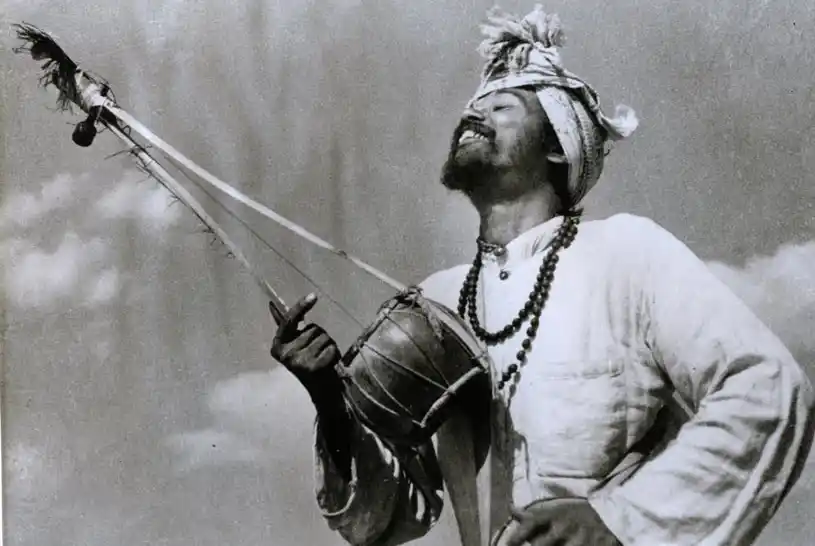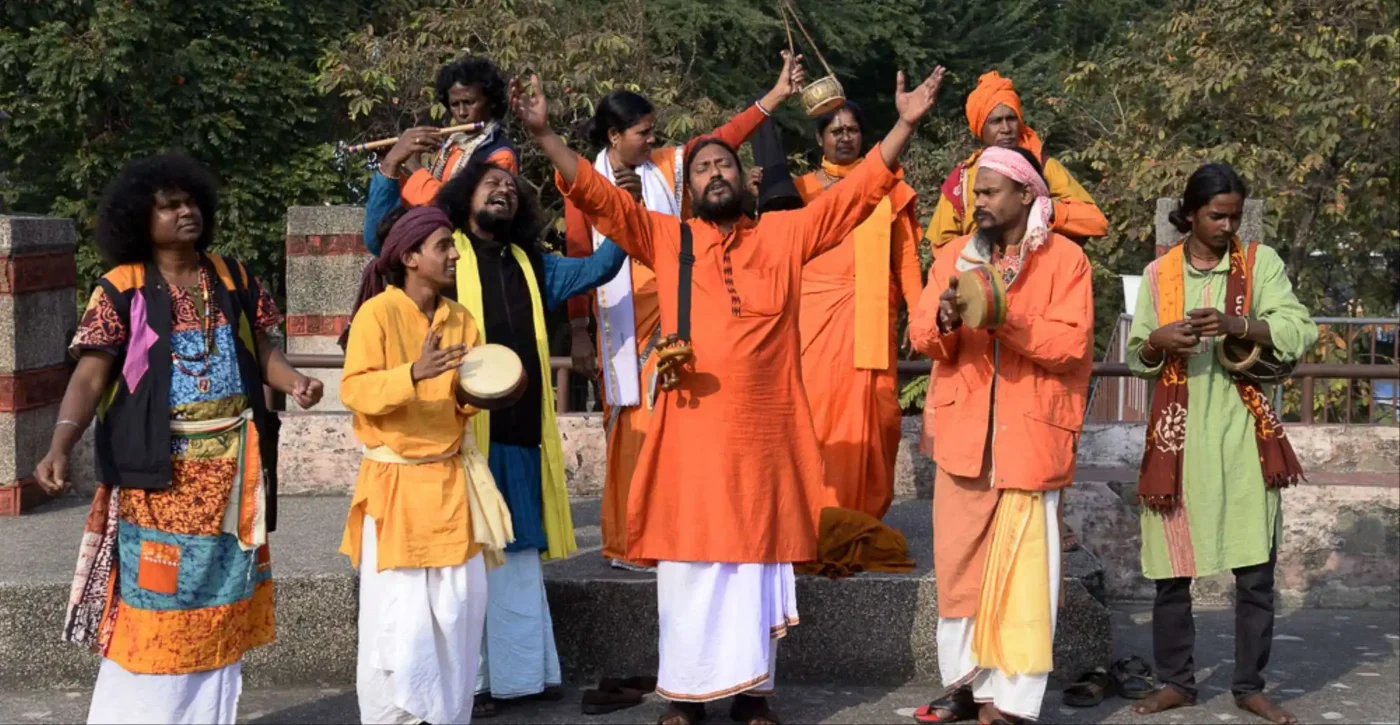India’s cultural landscape is as diverse as it is profound, embodying an array of traditions, music, and art forms that reflect its philosophical and spiritual roots. Among these, Baul singing stands out as a distinctive folk style from Bengal (including West Bengal, India, and Bangladesh). Known for its mystical lyrics, profound themes of divine love, and a way of life that defies conventional norms, Baul is more than just a music genre—it is a spiritual journey that blends elements of Sufism, Vaishnavism, Buddhism, and Tantra. This article delves deeply into the origins, philosophy, musical characteristics, and global impact of Baul singing.
Origins and Historical Context of Baul Singing
That singing finds its roots in the 15th century, during the rise of the Bhakti and Sufi movements. The term “Baul” is thought to derive from the Sanskrit word vatul, meaning “mad” or “possessed,” reflecting a divine madness or a state of ecstatic devotion. Early Bauls embraced a life that rejected orthodox practices and institutionalized religion, focusing instead on personal spiritual realization.
Bauls are often seen as wandering minstrels who live by the words of their songs, searching for the “man of the heart” (moner manush), an inner god or truth within themselves. This perspective makes Baul singing not just a musical expression but a deep spiritual philosophy that has grown alongside Bengal’s cultural history.

Philosophical Foundation of Baul
At the heart of Baul singing lies a philosophical approach that is both radical and universal. Bauls believe that the divine is not an external entity to be worshiped but resides within each individual. This philosophy, which aligns with the teachings of the Sufi saints and Vaishnava poets, promotes an intensely personal and experiential relationship with the divine.
Key tenets philosophy include :
- Moner Manush (The Inner Being): Bauls believe in discovering the divine within oneself, seeking a deep personal connection with the soul rather than following rigid dogma.
- Sadhana (Spiritual Practice): Bauls undergo a form of physical and mental discipline through song and dance, achieving spiritual insight and inner purity.
- Rejection of Materialism: Bauls view material wealth and social status as distractions from spiritual growth, living a nomadic and minimalist life.
Bauls convey these ideas through allegorical and metaphoric songs, challenging social norms related to caste, creed, and religious divisions, advocating instead for unity, love, and human connection.
Musical Structure and Characteristics
That songs are simple yet profound, characterized by their lyrical depth and spiritual fervor. They feature repetitive, trance-inducing rhythms that allow both the singer and listeners to experience a meditative state.
Key Elements in Baul Music
- Melodic Simplicity and Emotional Depth: That is a typically follow a repetitive and straightforward melodic structure, allowing the depth of the lyrics and the singer’s emotion to take center stage.
- Improvisation: Baul performances are often spontaneous, with singers improvising based on the mood, audience, and spiritual insight, which adds a sense of freshness to each rendition.
- Metaphorical Language: The lyrics are often allegorical, using metaphors that speak about life, love, and the divine journey, inviting listeners to delve deeper into hidden meanings.
Traditional Instruments Used in Music
Bauls employ simple, often handmade instruments that mirror the raw and earthy quality of their music:
- Ektara: A single-stringed instrument that symbolizes the unity between the singer and the divine. It produces a drone-like sound and sets the rhythm for the performance.
- Dotara: A two or four-stringed instrument that provides a deeper melodic layer to the songs.
- Duggi: A small kettle drum used to create rhythmic beats.
- Khamak: A stringed percussion instrument that generates a pulsating beat, played by pulling the string with one hand while the other beats a small drum.
- Kartal: Small cymbals used to add percussive elements and to punctuate the rhythm.

Notable Baul Saints and Practitioners
The tradition has been shaped by numerous influential figures who have left an indelible mark on Bengali culture. These saints and singers are revered not just as artists but as spiritual guides.
- Lalon Fakir (1774-1890): Perhaps the most iconic figure in Bauls tradition, Lalon Fakir’s songs are steeped in mysticism, love, and philosophical questioning. His verses challenge religious orthodoxy and emphasize finding the divine within oneself.
- Purnadas Baul: Known as the “Baul Samrat” Purnadas Baul is credited with bringing Baul music to the global stage, performing in many countries and collaborating with international artists.
- Bhaba Pagla: Known for his devotional poetry and songs, Bhaba Pagla’s contributions reflect the deeper emotional and spiritual aspects of philosophy.
- Rabindranath Tagore’s Influence: Though not a himself, Nobel laureate Rabindranath Tagore was heavily inspired by Bauls philosophy. He incorporated Baul themes and melodies into his own compositions, spreading Baul ideas and music to wider audiences.
Global Recognition and Cultural Impact
In recent decades, that music has gained global recognition as an emblem of India’s intangible cultural heritage. In 2005, UNESCO acknowledged Baul singing as a “Masterpiece of the Oral and Intangible Heritage of Humanity.” This recognition helped highlight this music’s value, drawing attention to its cultural significance and artistic beauty.
Several festivals and events celebrate Bauls song culture today, notably the annual Poush Mela in Shantiniketan, West Bengal. This festival, held in the winter, attracts thousands of visitors, both local and international, and features Baul performances alongside other forms of Bengali folk art, handicrafts, and traditional food.

Contemporary Baul Music
That music continues to evolve, with modern Bauls experimenting by blending traditional elements with contemporary styles. While some purists argue that this dilutes the essence of Baul, others see it as a natural progression that brings Baul philosophy to younger generations. Notable examples of this fusion include collaborations with rock, jazz, and electronic music genres.
That song artists like Paban Das and Parvathy Baul have introduced Baul music to international audiences, collaborating with musicians worldwide and adapting Baul singing to modern sensibilities. Despite these changes, the core of Baul philosophy—love, unity, and spiritual freedom—remains intact.
Challenges Facing the Baul Community
Despite its popularity, the community faces significant challenges. Many Bauls live in poverty, struggling to sustain themselves while upholding their way of life. The commercialization of Baul music presents another challenge, as some practitioners feel pressured to conform to mainstream demands, which may compromise the purity of their music and philosophy.
Younger generations may be less inclined to embrace the Baul way of life due to economic and social pressures, leading to concerns about the preservation of this rich heritage. However, initiatives are underway to support and document Baul music, ensuring that its legacy endures.

Conclusion
That singing type style is much more than a folk tradition; it is a spiritual journey, a philosophy, and a way of life that continues to captivate hearts across the world. Despite challenges, the resilience of the Bauls community and the timeless relevance of its philosophy ensure that bauls music will continue to inspire, evolve, and spread the message of love, unity, and self-discovery.
As long as people seek the divine within themselves, the song of the Bauls will resonate, offering a path of inner peace and freedom in a world that often feels disconnected from such truths. The Baul tradition, with its humble instruments and profound teachings, remains a timeless ode to the divinity within each human soul.
